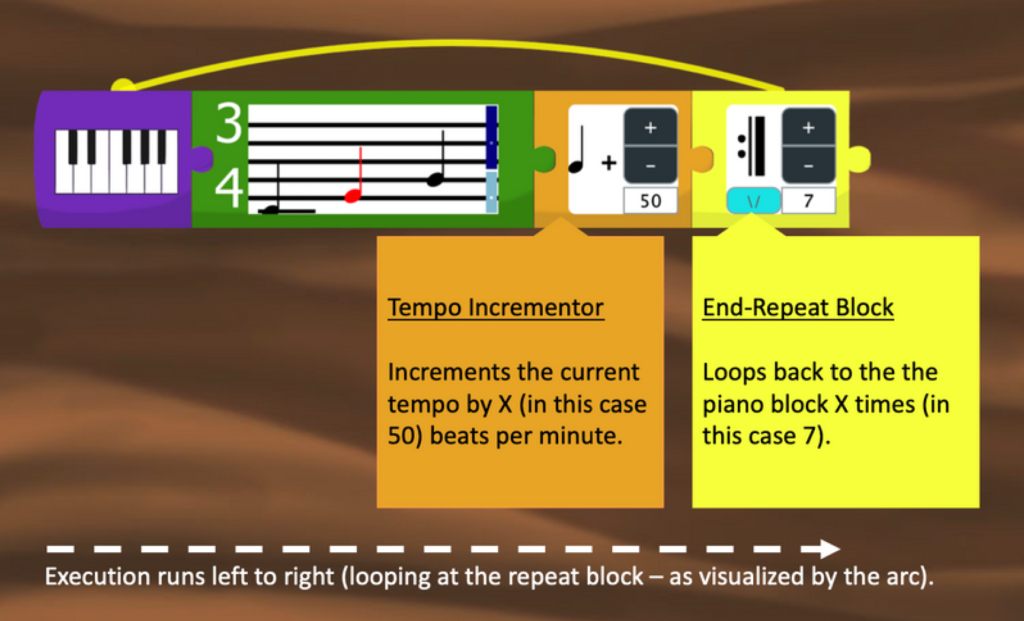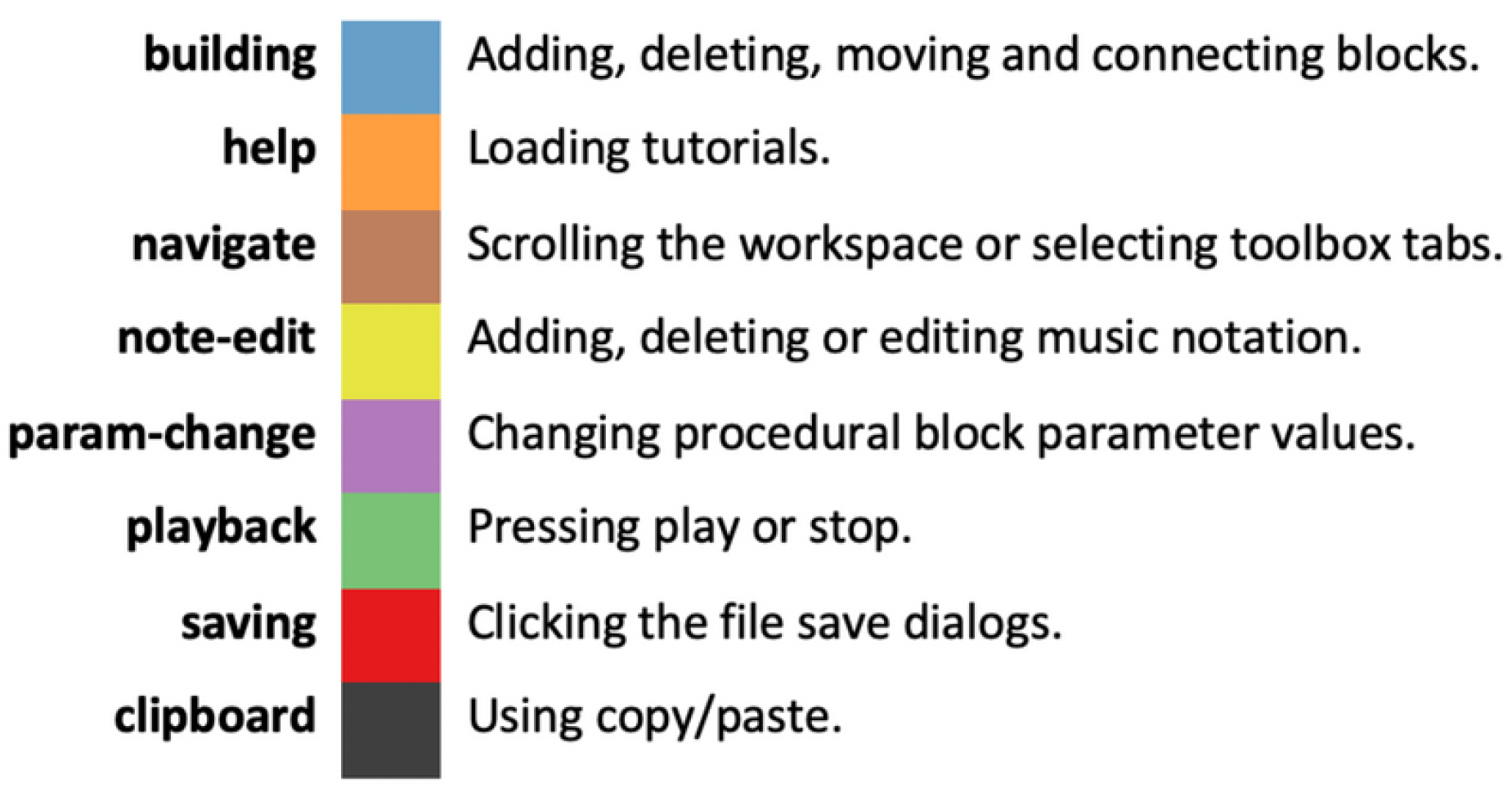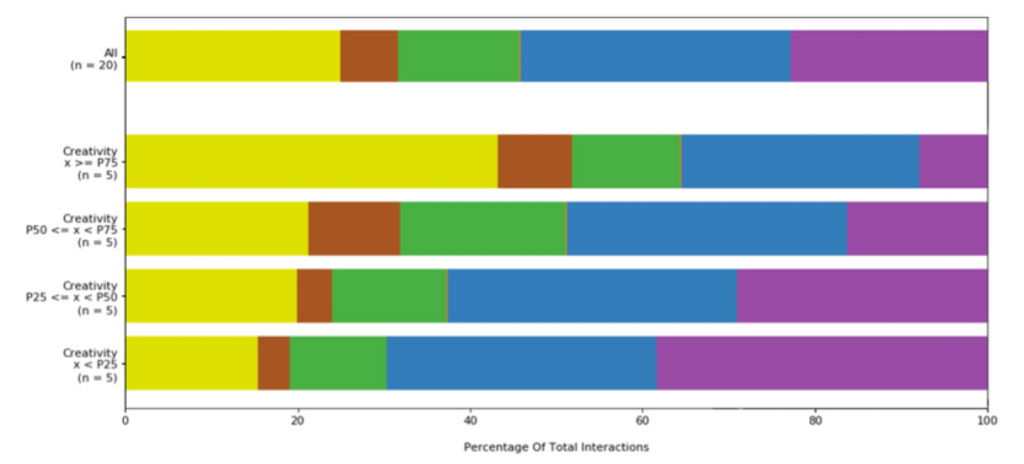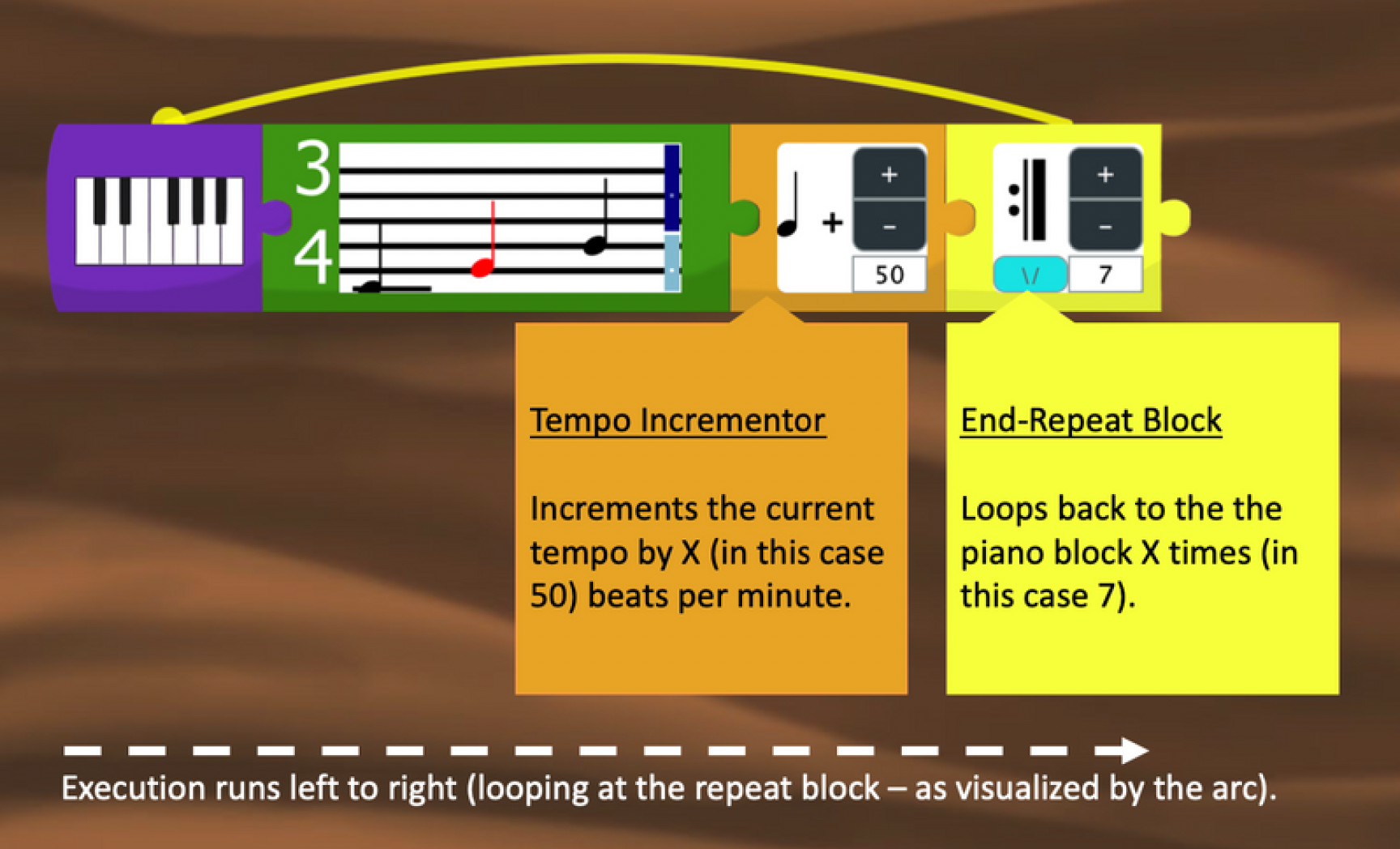Introduction
I had a look on the paper “Creativity in Children’s Music Composition” written by Corey Ford, Nick Bryan-Kinns and Chris Nash, which was published at Nime (https://nime.pubpub.org/pub/ker5w948/release/1) in 2021. The authors conducted a study examining which interactions with Codetta – a LOGO-inspired, block-based music platform – supports children’s creativity in music composition. In this context, “LOGO” refers to Papert’s LOGO philosophy to support children’s learning through play. Such experiential learning approaches are based on intrinsic motivation and tinkering. The authors stated that there was a lack of empirical research that investigated if a LOGO-inspired approach was conductive to creativity, which is why their aim was to get a better understanding on how children make music with such technologies.
About the study
The concrete research question of the study was “Which interactions with Codetta best support children’s ability to be creative in composition?” with the aim to uncover patterns of creativity within the participant’s first use of the tool. To get a better understanding of how Codetta works, I found this explanation video on youtube: https://www.youtube.com/watch?v=b7iMPuEaPts. The study was performed with 20 primary schoolers between the age range of 6-11. Due to the COVID-siutation the study was conducted in an online setting where the children had to perform two tasks: 1) composing a short piece of music and 2) answering a post-task questionnaire afterwards.
Procedure
Once the children opened Codetta, they were provided built-in, age-appropriate, instructions to get to know the basics of the tool (see Fig. 1). After completing the tutorial the children were asked to compose a short piece of music. No other motivation was given to keep the task open-ended. Once finished composing, the children completed a short post-task questionnaire online.

Data collection
The following data was collected: 1) log data of each child’s interactions using Codetta (and consequently their final compositions); 2) questionnaires responses and 3) expert ratings of each composition.
For visualizing the collection of log data a color scheme with several interaction categories was developed (see Fig. 2). The returned logs from Codetta were mined and visualised using Python and Anaconda. Once the data was prepared, statistical analysis was conducted using SPSS.
The post-task questionnaire consisted of 13 5-point Likert-scale statements, asking the children about their confidence in music lessons, writing music notation, using blockbased programs and using computers as well as the children’s perceptions of Codetta as a whole.
In order to quantify the children’s creativity, six expert judges rated each composition using several scales. Each judge assessed each child’s composition independently and in a random order. Their ratings were then averaged.

Results
I don’t want to go too much into the empirical data here, but to sum up the results it can be said that they focused on three subsections: the children’s compositions, interactions and UI perceptions.
Most children composed short pieces (mean length was 11.950 seconds) with conventional melodies like arcing up and down in pitch. The logged interaction data was visualised as a stacked bar chart using the color scheme mentioned before (see Fig. 3). The results of the questionnaire showed that the children felt they had to plan before writing their music and that they found it difficult to understand what each block was for.

Discussion
Based on the results several conclusions were drawn (shortened):
- Note-level interactions (rise/lower pitch, edit note length) best support children’s ability to be creative in music composition
- First-time novice users should initially be encouraged to focus on learning how to use Codetta’s notation engine (i.e. Introduction workshops)
- Codetta could automatically introduce blocks sequentially, based on children’s current knowledge and interaction patterns
- More complex features should be introduced gradually
- The UI Design could be more intuitive to avoid mistakes and confusion
Lastly it is to mention that the results are limited by the small sample size and user’s levels of experience. longitudinal study with a larger number of participants would be needed to throughly investigate how interaction styles develop with time.
Own thoughts
I found it super interesting to read about the topic “creativity in children’s music composition” for several reasons: First of all, I spent a huge part of my childhood and teenage years in music schools, playing several instruments and taking music theory courses, but I never got in touch with actually composing music myself – Neither in primary/high school nor in music school or in any of the music-theory courses I took. So I totally agree with the authors’ statement that composing was a neglected area of music education. Moreover, I liked the connection between sound design, interaction design and sociology since digital music composition combines all of that. It could also be useful as inspiration for finding a master’s thesis topic.
Though it was a bit hard for me to understand the “Results” because I have only basic experience and knowledge in statistics and would need a deeper dive into that topic to get all the measures and values right. Yet it was nice to engage with research after not binge-reading studies and empirical stuff in a while (speaking of bachelor’s thesis).
